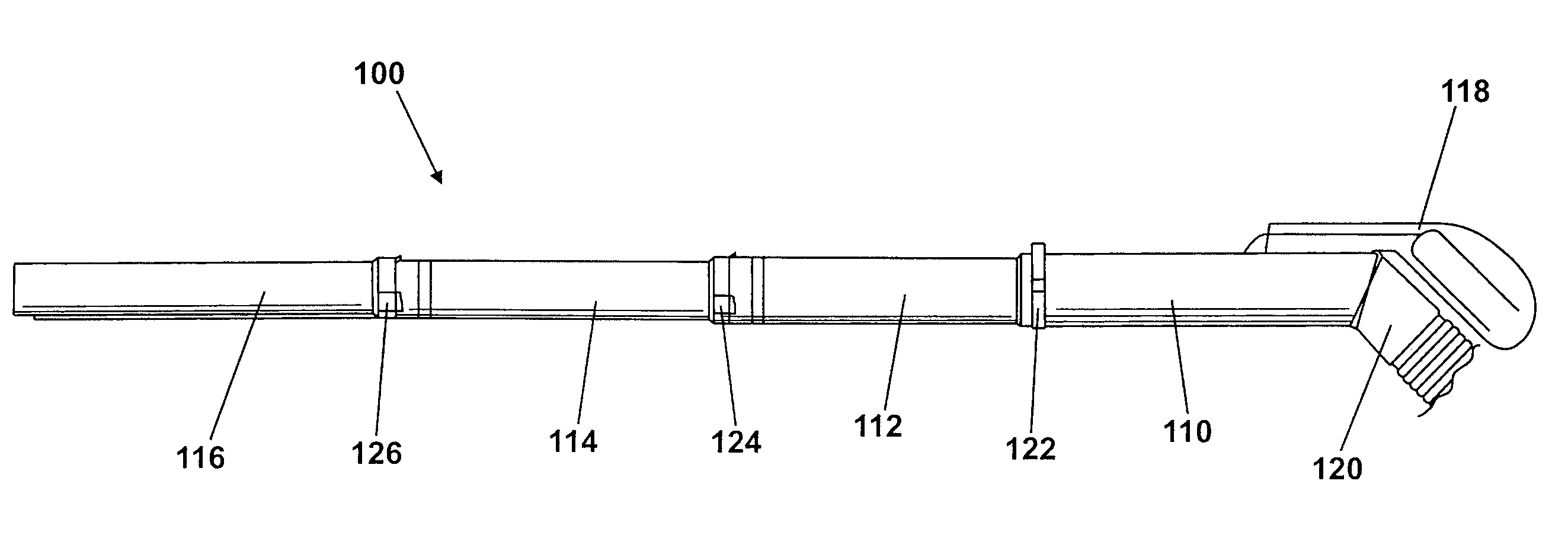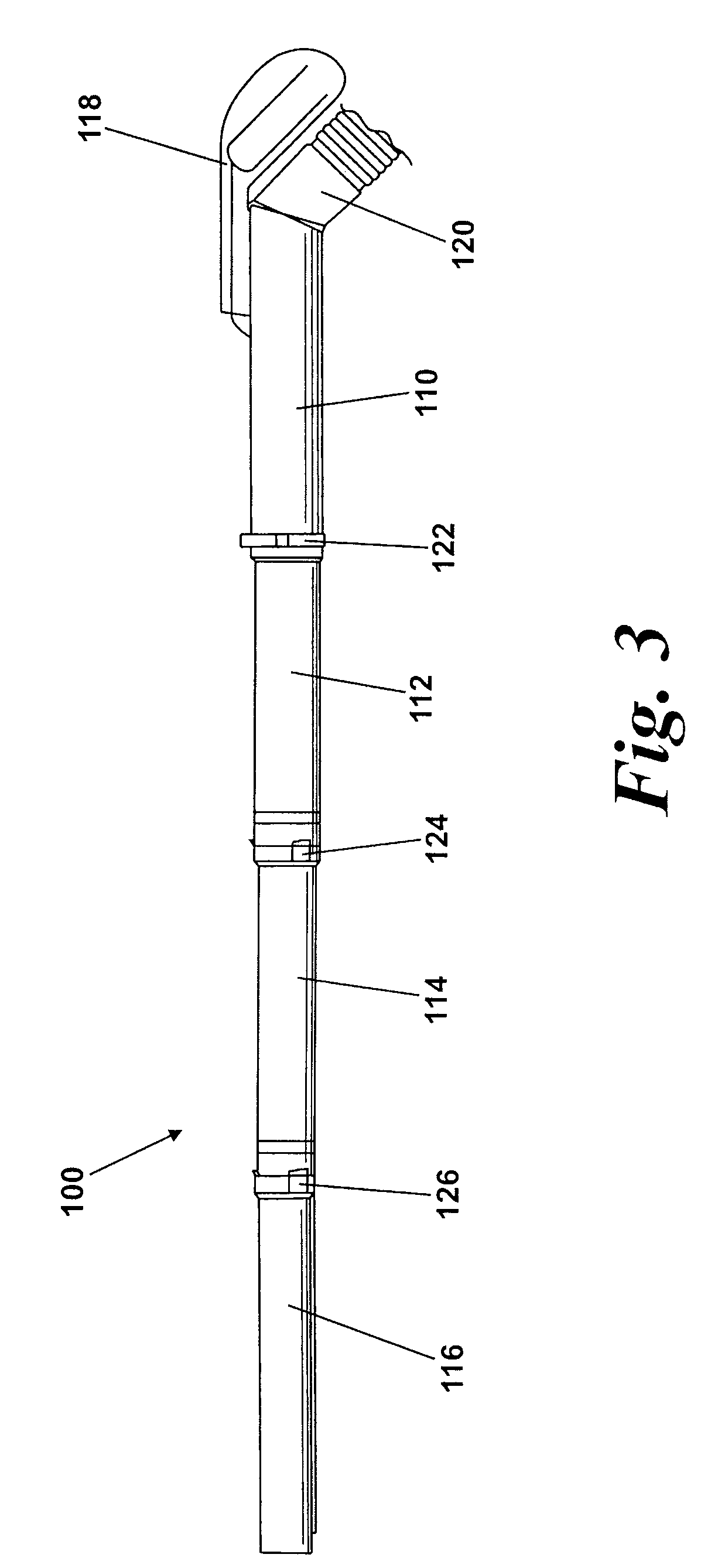Wand for an appliance
- Summary
- Abstract
- Description
- Claims
- Application Information
AI Technical Summary
Benefits of technology
Problems solved by technology
Method used
Image
Examples
Embodiment Construction
[0031]A vacuum cleaner incorporating a wand according to the invention is shown in FIGS. 1 and 2. The vacuum cleaner 10 has a main body 12 housing a motor and fan unit (not shown) and to which a pair of wheels 14 is attached. The wheels 14 allow the main body 12 of the vacuum cleaner 10 to be manoeuvred across a floor surface. Separating apparatus 16 is releasably attached to the main body 12. In this example, the separating apparatus 16 takes the form of a cyclonic separator. However, other arrangements, for example, a pleated filter or a bag, may be used. The nature of the separating apparatus 16 is not material to the invention.
[0032]The separating apparatus 16 has an inlet 18 through which a dirt-laden airflow enters the separating apparatus 16. A hose 50 is connected to the inlet 18 by a first connector 52, which is located at one end portion of the hose. The hose 50 also has a second connector 54 at an opposite end portion to the first connector 52. A wand 100 according to the...
PUM
 Login to View More
Login to View More Abstract
Description
Claims
Application Information
 Login to View More
Login to View More - R&D
- Intellectual Property
- Life Sciences
- Materials
- Tech Scout
- Unparalleled Data Quality
- Higher Quality Content
- 60% Fewer Hallucinations
Browse by: Latest US Patents, China's latest patents, Technical Efficacy Thesaurus, Application Domain, Technology Topic, Popular Technical Reports.
© 2025 PatSnap. All rights reserved.Legal|Privacy policy|Modern Slavery Act Transparency Statement|Sitemap|About US| Contact US: help@patsnap.com



